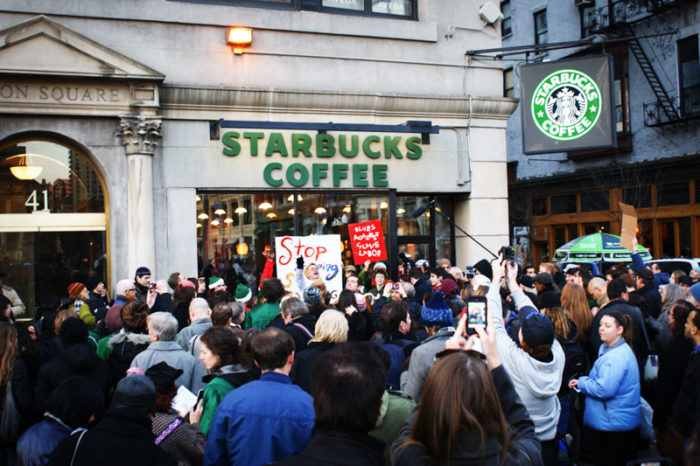My son is not entirely convinced he really needed this Fischer Price Luv U Zoo Jumperoo (Video by Alex Stonehill)
I’m drowning in a sea of newly minted, primary-colored plastic.
Before my son was born I was smugly confident about my ability to resist the new baby buying frenzy. I sought out hand-me-downs and I scoured the internet for hyper minimalist must-have lists.
Six months in, all is lost. I’m embarrassed to admit how susceptible I am to any product that promises added convenience, significant development or (especially) more sleep.
But watching my husband break down a mountain of Amazon boxes the other night I experienced a wave of panic, and not just because my bank account now seems permanently stuck on red. What about the hidden environmental costs of my recent online shopping spree?
As Alex patiently popped bubble wrap and wrestled with packing tape, I realized I had to quit cold turkey. In a fit of penance I logged onto Facebook and declared that I would buy nothing (except food and basic toiletries) for one full month.
Within hours 10 other people had joined the challenge.
“It’s become so easy to buy stuff now,” Tom Watson says about online shopping. He manages a recycling and environmental services public outreach program for King County, “It’s just so addictive and almost every little thing comes in its own separate little box.”
It’s no secret that Americans consume more than their global share. Recent data from the Global Footprint Network shows that four earths would be needed to support American level consumption by every person on the planet.
But we may be witnessing some resistance against the drumbeat for endless consumption. And our region, as known for it’s “green” identity as it is for global consumer brands, is part of the charge.
“Everything can be fixed in India, you never throw anything away.”
There’s the Buy Nothing Project, which uses Facebook groups to encourage neighbors to share instead of buy (inspired by two Bainbridge Islanders and now replicated around the globe) and even recent protests at Starbucks headquarters highlighting the company’s waste-heavy practices.
“I wanted to test myself,” says my friend Sweta Saraogi who decided to join me in my “Buy Nothing Month” challenge. She adds that the experience is already starting to get her thinking more about the global impact of her daily choices, “I realize I need to be thinking bigger…I need to be thinking about environmental mindfulness too.”
But does an experiment like this really help in a country with some of the highest levels of unsustainable consumption in the world?
Watson (who wrote an “EcoConsumer” column in The Seattle Times for 10 years) says it’s hard to measure the actual impact of this type of “waste prevention experiment.” He explains that governments, researchers and environmentalists are constantly debating the correct criteria to measure the impact of what we do or don’t buy.
Regardless, he thinks it’s important for more people to find creative ways to engage with the issue of overconsumption.
“I really believe that it doesn’t help to be judgmental,” says Watson, who wants people to feel empowered not criticized, “It’s great that rather than feeling guilty and talking about it…friends do something and experiment.”

To help us with that experiment Watson says we’d do well to think about how not to throw anything away as well as how not to buy anything. He recommends King County “Repair Cafes” that help bring “fixers” to communities to repair everything from ripped jeans to broken smart phones.
Saraogi, who grew up in India, says she already has some practice — reuse and repair was the standard of her childhood.
“Everything can be fixed in India, you never throw anything away,” says Saraogi, “Here in America if it doesn’t work you throw it away. Who is going to spend the time to fix it?”
This philosophy has already been put to the test in the first few days of Buy Nothing Month. Saraogi says the pedestal for her electric fan broke and started making an annoying noise. But instead of tossing it she figured out a way to jury-rig a new stand herself and now it’s humming along just fine.
“Had it not been this ‘not buying month’ I would have totally bought a new fan,” says Saraogi laughing, ‘It’s totally working, Sarah.”
But will it still be in a month? Check back mid-August and we’ll see.

